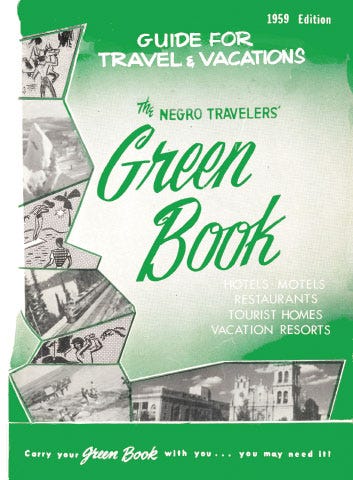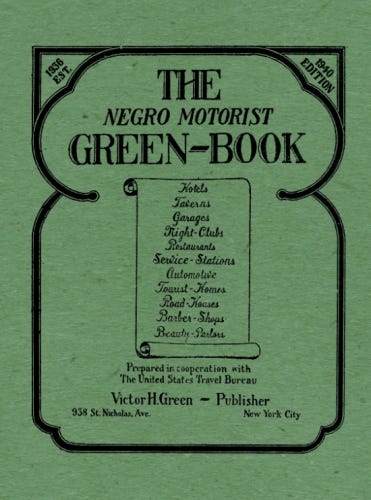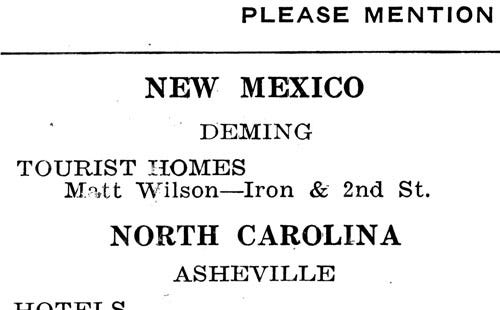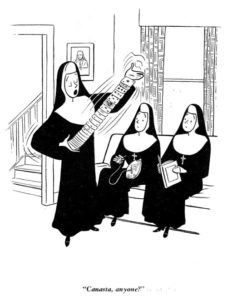Nat Gertler on the Story Behind the Real Green Book
Posted on November 30, 2018 at 3:34 pm

Nat Gertler’s About Comics is the publisher of the reprinted Green Book, the travel guide that inspired the title of one of the year’s best movies. It listed hotels, restaurants, and other businesses that welcomed Black tourists before the 1964 Civil Rights Act required public accommodations to be open to everyone. In the movie, Black musician Don Shirley was restricted to modest-to-shabby Green Book-listed businesses while his white driver stayed with the other members of the trio at whites-only hotels. In an interview, Gertler explained the history of the Green Book and how the reprint became one of his most popular publications.
How did the Green Book get started and who published it originally?
Victor Hugo Green started the annual series in 1936. He was a mailman, delivering the mail in Hackensack, New Jersey but living in Harlem. The first year’s book just covered the New York area, but the demand for a national book was quickly apparent.
How did people buy it? Bookstores or through the mail?
 The Green Book was available through the mail, and some Black organizations made it available to their members. And some of the locations listed in the book got copies to distribute — after all, if you were staying at one hotel that accepted Black customers, odds are you were going to do some traveling and need to stay somewhere else. Some years’ editions had cover versions with places for those hotels to stamp their names and addresses. But perhaps the most interesting source was gas stations — specifically Standard Oil stations (that was Esso then, Exxon now.) Unlike other major gas chains, Standard Oil allowed African Americans to own station franchises. In the 1949 Green Book — that’s one of the eight editions that I’ve reprinted so far — there’s even an article by Standard Oil’s special representative to what was then called the “Negro market.”
The Green Book was available through the mail, and some Black organizations made it available to their members. And some of the locations listed in the book got copies to distribute — after all, if you were staying at one hotel that accepted Black customers, odds are you were going to do some traveling and need to stay somewhere else. Some years’ editions had cover versions with places for those hotels to stamp their names and addresses. But perhaps the most interesting source was gas stations — specifically Standard Oil stations (that was Esso then, Exxon now.) Unlike other major gas chains, Standard Oil allowed African Americans to own station franchises. In the 1949 Green Book — that’s one of the eight editions that I’ve reprinted so far — there’s even an article by Standard Oil’s special representative to what was then called the “Negro market.”Who vetted the hotels and restaurants? Were most of them black-owned?
The Guide tries to make clear that the listings aren’t endorsements — a normal listing isn’t mean to guarantee the quality of an establishment, that it just indicates that they were willing to take travelers of color…. although at times they created the implication that businesses that went beyond the simple listing and bought an ad were, of course, particularly good places to stay. Some businesses submitted themselves for listings, some were submitted by customers, but one particularly good source were African American postal workers, just like Green himself. After all, mailmen travel the neighborhood, they know what’s going on.
How does a business with a name like “About Comics” end up publishing something so non-comic as the Green Book?
About Comics is a small company… just one guy, that’s me. If you hear me saying “we,” that’s the corporate “we,” much like the royal “we.” And most of what I’ve published over the years have been comics or at least comics-related, but I’ve got no boss I have to convince when I want to try publishing something else. A lot of what I did is simply driven by my curiosity; when I get to wondering about something, trying to publish it is my way of doing research.
Maybe about three years ago, I read a couple articles about the Negro Motorist Green Book, and it immediately caught my curiosity. It linked to some things that my stepmother had told me. My stepmother, Poco, is half Black, half Cherokee, and when she was in high school she’d be going to one of her athletic competitions, but the bus would leave all of her teammates, all white girls, at one of the hotels in town and then have to drive Poco out to someplace beyond the city limits where she could stay. The sweetest woman you can imagine — I didn’t know her as a teen, of course, for all I know she was a hellion back then, but that’s neither here nor there, that’s not what she was being judged on. Still, to know she was treated like that.
So I was curious about the Green Book, decided to get one for myself so I could experience it… and then found that they were collectors items, museum pieces really. Museums were paying tens of thousands for one. That wasn’t in my budget, at least not just to satisfy my curiosity. But hey, why not see if I could republish it? If there was enough demand for the original editions to send the price that high, maybe I could sell a couple hundred copies of a facsimile edition and make it worth the time I put into reprinting it… and if not, hey, at least I’d have satisfied my own curiosity. And, lucky for me, it turned out that I was not the only one curious about it.
What surprised you about what it included?

I kind of expected it to be a book filled with anger, with screeds against discrimination and with warnings about the horrible things that might happen to you in certain places… but what I found was a very practical document. Just listings of places that were willing to take you as a customer, and maybe some articles, travelogues or other travel advice. And in a way, that was even scarier, even more horrible, because the practicality of it all just lets you know how damnably rote this all was. Green didn’t need to explain to the reader what the problem was, his readers knew what problem was being addressed. And he didn’t need to warn against going certain places, just let you know where you could go… and the sparseness of locations at time told a story. The first volume I reprinted — the 1940 edition, still my best seller — for the entire state of New Mexico, there’s only one entry, just one place to stay. And it’s listed as a “tourist home”, and what that meant was that this wasn’t a hotel, this was just some Black family that was willing to put you up for the night on your trip, kind of the AirBNB of its day. Now, this might not have been the only actual relevant business in New Mexico, the Green Book was still growing and learning about the places that were out there… but if it wasn’t listed in the Green Book, how were you going to find it?
When did you get started in publishing? What have been your most popular titles?
This year is About Comics’ 20th anniversary. At the moment, the 1940 Negro Motorist Green Book actually is our biggest seller — it sells well through Amazon, and we sell a lot of copies to museum gift shops. In terms of comics material, our best sellers have been our books of the stuff that Charles M. Schulz did besides Peanuts, like the book we have out collecting his other newspaper series, It’s Only a Game, which he did for newspapers in the late 1950s. But we’ve also had really strong sales on things we do aimed at aspiring comics creators. Panel One, a collection of comic book scripts by big comic book names like Neil Gaiman and Kurt Busiek, and even filmmaker Kevin Smith, has been perennially strong. and our Blank Comic Book Panelbook series, which is literally just books filled with empty triangles for kids to draw comics in, has done surprisingly well.
What’s coming next?

You know how I said that publishing is often my form of research? Well, about a year ago I discovered the odd world of 1950s Catholic cartoon books. These are books mostly of single panel gag cartoons about nuns, and there were dozens of them, some selling in the hundreds of thousands of copies. It’s this subculture that I haven’t really seen anyone try to cover. Anyway, I launched a line on April Fools Day, trying to get everyone to believe that I was only kidding about suddenly publishing a pile of nun cartoon books, when in reality, I was! By the end of the year, I’ll have published two dozen books of these cartoons. The one I’m laying out now is monk and nun cartoons drawn by an actual monk. If folks are interested, I suggest that they follow @dailynun1 on Instagram or Twitter — they’ll get a different nun cartoon in their feed every day, plus they’ll see announcements when I have new volumes out.
And after that? We’ll see what catches my eye.
